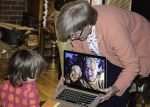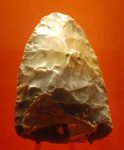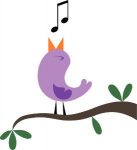This week younger students start investigating how we can find out about the past. This investigation will be conducted over the next 3 weeks and will culminate in a Scientific Report. Older students are considering different sources of historical information and how they will use these sources in their research.
Foundation/Prep/Kindy to Year 3
 Students in stand-alone Foundation/Prep/Kindy classes (Unit F.3), as well as those in integrated classes (Unit F-1.3) and Years 1 (Unit 1.3), 2 (Unit 2.3) and 3 (Unit 3.3) are all starting to think about how we can find out about the past. This is a great opportunity for teachers to encourage students to think about how we know about the past and brainstorm ideas, as well as coming up with their own avenues of inquiry. Teachers may wish to hold a Question and Answer session in class to help guide students to examine many different aspects of this topic. The resource Finding Out About The Past contains core information to help the teacher guide the discussion to cover different ways of examining the past. This discussion can be tailored to the level and individual circumstances of each class. Foundation/Prep/Kindy students are just starting to think about the past as a time before the present and how this affects what we know about past events. The discussion can be developed in higher years, and the teacher can start to introduce the notion of sources of information, including texts and material culture. This investigation forms the basis for the Method section of the Scientific Report, which is included in the Student Workbook.
Students in stand-alone Foundation/Prep/Kindy classes (Unit F.3), as well as those in integrated classes (Unit F-1.3) and Years 1 (Unit 1.3), 2 (Unit 2.3) and 3 (Unit 3.3) are all starting to think about how we can find out about the past. This is a great opportunity for teachers to encourage students to think about how we know about the past and brainstorm ideas, as well as coming up with their own avenues of inquiry. Teachers may wish to hold a Question and Answer session in class to help guide students to examine many different aspects of this topic. The resource Finding Out About The Past contains core information to help the teacher guide the discussion to cover different ways of examining the past. This discussion can be tailored to the level and individual circumstances of each class. Foundation/Prep/Kindy students are just starting to think about the past as a time before the present and how this affects what we know about past events. The discussion can be developed in higher years, and the teacher can start to introduce the notion of sources of information, including texts and material culture. This investigation forms the basis for the Method section of the Scientific Report, which is included in the Student Workbook.
Years 3 to 6
 Students in Years 3 (Unit 3.7), 4 (Unit 4.3), 5 (Unit 5.3) and 6 (Unit 6.3) are following a similar line of investigation this week, but examining Historical Sources specifically. As well as Primary and Secondary Sources, students are encouraged to think about Oral Sources, Textual Sources and Material Culture (artefacts such as stone tools or historical items). This discussion forms the basis for students completing the Method section of their Scientific Report, where they will list the sources of information and how these contributed to their research. Older students might be able to self-direct this process, although teachers may wish to guide the process through an initial class discussion. Teachers may wish to take the class through a discussion of the sources they are using for their research and discuss how students will use and report on these sources in their report for their topic.
Students in Years 3 (Unit 3.7), 4 (Unit 4.3), 5 (Unit 5.3) and 6 (Unit 6.3) are following a similar line of investigation this week, but examining Historical Sources specifically. As well as Primary and Secondary Sources, students are encouraged to think about Oral Sources, Textual Sources and Material Culture (artefacts such as stone tools or historical items). This discussion forms the basis for students completing the Method section of their Scientific Report, where they will list the sources of information and how these contributed to their research. Older students might be able to self-direct this process, although teachers may wish to guide the process through an initial class discussion. Teachers may wish to take the class through a discussion of the sources they are using for their research and discuss how students will use and report on these sources in their report for their topic.

 NAPLAN’s over and it’s time to sink our teeth into the main body of curriculum work before mid-year reporting rolls around. Our younger students are using all their senses to study the environment and local area around them, whilst our older students are hard at work on their Explorer projects.
NAPLAN’s over and it’s time to sink our teeth into the main body of curriculum work before mid-year reporting rolls around. Our younger students are using all their senses to study the environment and local area around them, whilst our older students are hard at work on their Explorer projects. Students in Years 3 (
Students in Years 3 (
The activities embedded in the programs make the subjects more engaging for the students as well as the teacher.
Trent Perry, Teacher